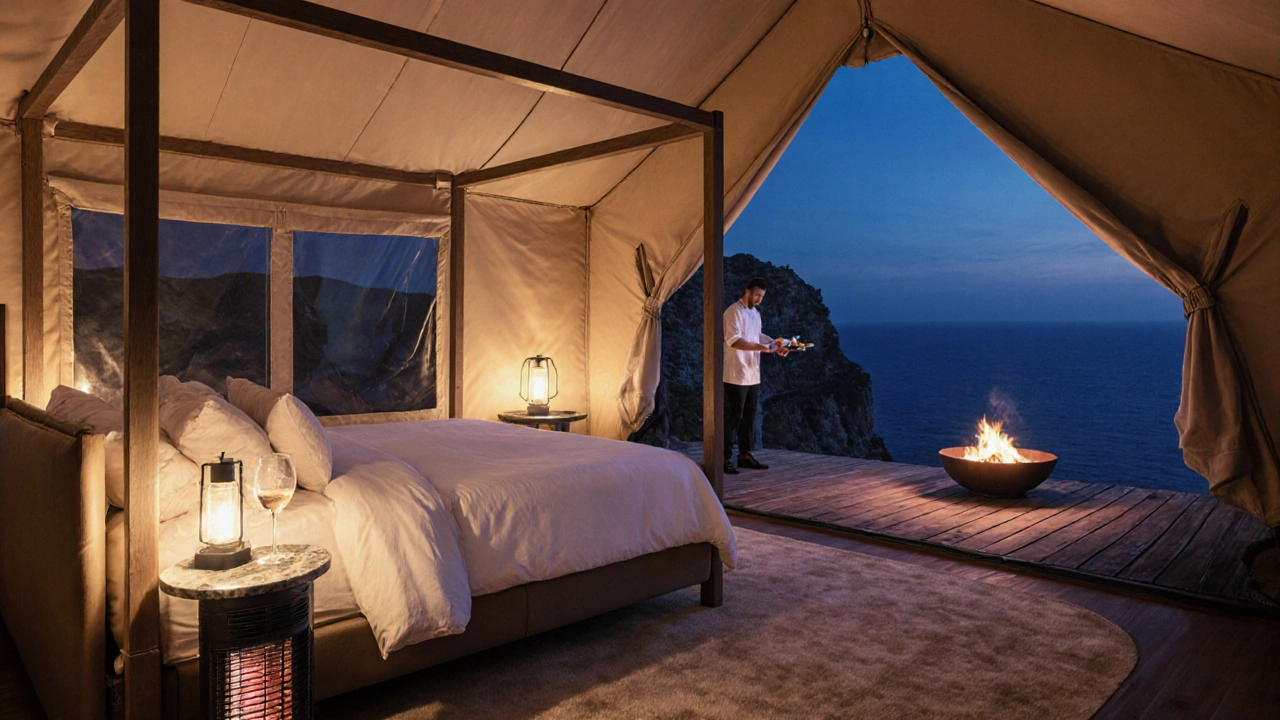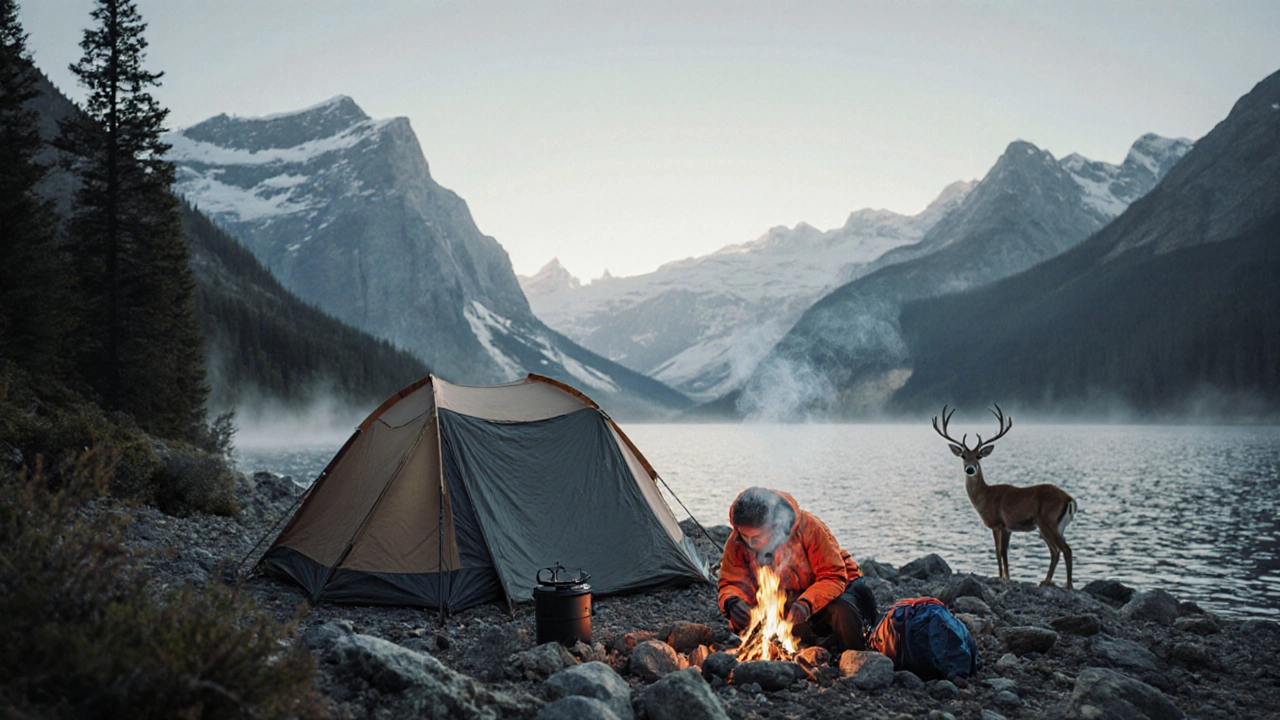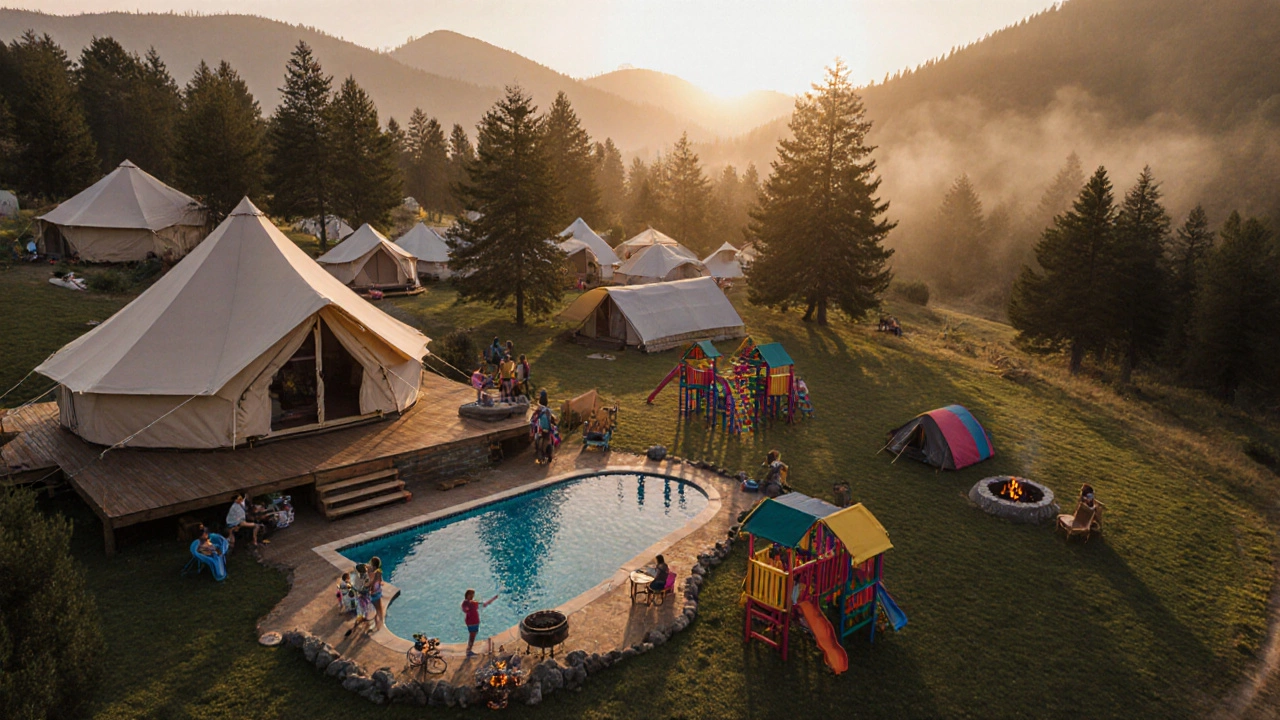When you hear the word Campsite is a designated spot where travelers set up tents, park RVs, or stay in cabins for a short‑term outdoor getaway.Campsites range from bare‑bones plots in the wilderness to full‑service resorts that rival five‑star hotels. Knowing the three major campsite types helps you pick the right experience, budget, and gear before you hit the road.
Why Knowing the Three Main Types Matters
Most guides lump all camping together, but each type delivers a distinct blend of comfort, privacy, and adventure. Confusing a wild campsite with a luxury resort can lead to surprise fees, inadequate gear, or even a ruined vacation. By separating the options, you can match your expectations to reality, avoid common pitfalls, and make the most of your travel budget.
1. Luxury Campsites - Glamping in Comfort
Luxury campsites, often marketed as glamping, turn the outdoors into a boutique hotel experience. Think stylish canvas tents, private bathrooms, on‑site chefs, and curated activities like sunrise yoga or wine tastings.
Key attributes:
- High‑end furnishings - king‑size beds, climate control, and designer décor.
- Full‑service amenities - Wi‑Fi, electricity, hot showers, and sometimes even swimming pools.
- Location - frequently situated in scenic national parks, vineyards, or seaside cliffs.
Luxury campsite bookings usually require advance planning, especially during peak seasons. Prices can range from $150 to $500 per night, but the added comfort often justifies the cost for couples, honeymooners, or anyone looking to unwind without roughing it.
2. Family Campsites - Space for All Ages
Family campsites are built for groups of any size, offering multiple pitches, playgrounds, and organized kid‑friendly programmes. They strike a balance between comfort and outdoor adventure, making them ideal for school holidays or multi‑generational trips.
Typical features include:
- Large pitches that accommodate tents, caravans, and motorhomes side by side.
- Recreational facilities - swimming pools, sports fields, nature trails, and communal BBQ areas.
- On‑site staff who run activities such as treasure hunts, craft workshops, and guided hikes.
While the nightly rate is modest - often $30‑$80 for a standard pitch - children’s activity fees and optional rentals (bike hires, cooking gear) can add up. Many family sites offer package deals that bundle accommodation, meals, and activities, simplifying budgeting.

3. Wild Campsites - True Back‑to‑Nature Experience
Wild campsites, sometimes called backcountry or primitive sites, strip away comforts to deliver raw immersion in nature. They’re usually accessed by foot, bike, or a short drive on unpaved roads and often lack any facilities beyond a cleared ground.
What to expect:
- Minimal infrastructure - no electricity, water hookups, or waste disposal.
- Self‑reliance - you bring a portable stove, water purification, and a reliable shelter.
- Location - hidden valleys, mountain ridges, or lakeshores where you can hear only the wind and wildlife.
Permits may be required, especially in national parks, and fees are typically low - $5‑$20 per night. The main cost is the gear you need to stay safe and comfortable.
Choosing the Right Type for Your Trip
Match your priorities to the campsite type:
- Comfort vs. Adventure - If you crave a plush bed and hot shower, go luxury. If you want to test your survival skills, choose wild.
- Group size - Large families benefit from family sites with multiple pitches and kid‑focused amenities.
- Budget - Luxury commands premium rates; wild campsites are budget‑friendly but demand gear investment.
- Location access - Some wild sites require a hike; luxury campsites are often reachable by car.
Consider booking windows, seasonal weather, and any required permits. Early planning reduces the risk of “no vacancies” and helps lock in better rates.

Quick Comparison Table
| Attribute | Luxury (Glamping) | Family | Wild |
|---|---|---|---|
| Amenities | En‑suite bathrooms, Wi‑Fi, gourmet meals | Shared kitchens, playgrounds, swimming pool | None - self‑contained only |
| Ideal Guests | Couples, honeymooners, comfort seekers | Families, groups, multi‑generational trips | Solo hikers, adventure purists |
| Typical Cost/night | $150‑$500 | $30‑$80 | $5‑$20 (permit fee) |
| Privacy Level | High - private plots or cabins | Medium - shared grounds | High - isolated spots |
| Booking Difficulty | High - need advance reservation | Medium - walk‑ins possible | Low - often first‑come, first‑served |
Common Pitfalls and Pro Tips
- Don’t forget permits. Wild sites in protected areas often require a reservation or daily fee. Check the official park website well before you travel.
- Pack the right gear. Luxury sites provide linens and sometimes cookware; family sites usually supply basic grills; wild sites need you to bring everything, including a portable toilet solution.
- Check weather forecasts. High‑altitude wild campsites can become hazardous quickly. Luxury and family sites usually have on‑site staff to advise.
- Read reviews. Platforms like TripAdvisor and dedicated camping forums reveal hidden costs (e.g., firewood fees) and real‑world cleanliness scores.
- Plan meals ahead. Luxury camps often include meal plans; family sites may have communal kitchens; wild camps demand self‑cooked meals, so pack non‑perishable foods and a reliable stove.
Frequently Asked Questions
What equipment is essential for a wild campsite?
At minimum bring a weather‑proof tent, sleeping bag rated for the lowest night temperature, a portable stove, water filtration, a headlamp, and a sturdy tarp for extra shelter.
Are luxury campsites pet‑friendly?
Many upscale glamping resorts welcome pets, but policies vary. Look for “pet‑friendly” tags and verify any extra fees before booking.
How far in advance should I book a family campsite for school holidays?
For popular UK sites, aim to reserve 3‑6 months ahead. Early booking secures the best pitches and often nets seasonal discounts.
Can I combine different campsite types on one trip?
Absolutely. A mixed itinerary-starting with a luxury resort, then moving to a family site, and ending at a wild spot-offers a layered experience that balances comfort with adventure.
Do I need travel insurance for camping?
Travel insurance that covers outdoor activities is wise, especially for wild camps where rescues or equipment loss are more likely. Check the policy’s “adventure sports” clause.
